How to Ship a SaaS Start-up in 4 Months
“Hey man I got an awesome business idea.”
I was ecstatic talking to Mon. I’ve always wanted to start a SaaS company and I knew this idea had a pretty good chance to take off.
“Yeah? What is it?”
“It’s a very simple, easy to develop and useful tool to gather data from a person’s website. Best of all, it already has an existing product/market fit.”
“Come on over. Let’s talk”
I drove over to Mon’s place. We discussed the idea over, gave some measurements on how we’ll separate work and equity and went to work right away. Today, Qeryz is 4 months old. It’s still seeing a lot of improvements as the ideas in the icebox are plenty – but right now, it’s working like a dream.
Sounds like an overnight success doesn’t it?
Actually, everything you see about Qeryz is more than 3 years in the making.
Getting in the Internet Marketing Industry
I started my first company, SEO Hacker April of 2010. It was a simple SEO blog that I had no intentions of growing – merely a hobby. However a few months in and I knew that I’m onto something good. It wasn’t too long before I started servicing clients with their website’s SEO.
I officially registered SEO Hacker as a business November of 2011. It was completely bootstrapped. The money I spent in starting SEO Hacker was a measly $30.95 – to purchase the domain name and 1gb worth of hosting.
Talk about business capital!
Today SEO Hacker is grossing somewhere $23,000 a month. It’s still a sole proprietorship and I’m still CEO.
However that’s not the point. The point is, the journey of starting up an SEO company, learning the ropes of inbound marketing, and forming an awesome team is a huge leverage in starting a SaaS business. In servicing clients around the globe, I’ve learned a lot about SEO, CRO, SMM, Content Marketing, Analytics, Email Marketing, and so on and so forth – all hands on.
Here are some of the tools I’ve used (and still using) in just over 4 years of internet marketing experience:
- Google Analytics
- Qeryz
- Buffer
- Kissmetrics
- Cognitive SEO
- Link Research Tools
- Moz
- Customer.io
- Inspectlet
- Screaming Frog
- Monitor Backlinks
- CrazyEgg
- Hubstaff
- SemRush
- Hootsuite
- SocialOomph
- Aweber
- Mailchimp
- Unbounce
- Optimizely
- MaxCDN
And a lot more besides. Tools that help me learn on the fly. Some of these tools needed more configuration, some needed less. Some of them gave back brilliant insights, some I used for functionality. In all, I have grown immensely in my knowledge of internet marketing – which is, in itself, a fulfilling goal.
All this, I realize now, is merely the preparation for opening night.
All this is just step 1.
Why a second start up?
Why not? We already have step 1 established. We have an awesome idea that we think could fly. We had the team to pull it off.
SEO Hacker currently has around 20 people driven to do internet marketing. My co-founder, Mon, has around 6 people in his development team all ready to crack code. We have nothing to lose. Well, almost nothing.
You see me and Mon have been in the services industry for quite some time. I’m in the SEO and internet marketing services niche and Mon is in the systems development services niche. We’ve both learned that scaling services up means increasing costs – direct and indirect.
To put it simply, scaling up in the services industry means that you have to scale up everything else – which incurs a whole buck load of recurring expenses such as manpower, benefits, electricity bills (of which Philippines is one of the most expensive), and so on and so forth.
It doesn’t take a genius to see that SaaS is a lot easier to scale in the long run than a services company. You set-up the system, make sure it works, set-up the website, drive in customers, and the only problem you’ll pretty much face along your growth will be the server capacity for growing users as well as bug squashing and new features development.
No need to add as much manpower, no need to add as much expenses.
And did you notice the rate that items are imitated by manufacturers in China today? Hardware and other physical products are facing the threat of an imminent imitation spree. However, information products such as SaaS tools are much harder to replicate – and so, in my opinion, the sustainability of having a great SaaS product is way better.
If that’s not reason enough, then how about crazy revenues? You can see in this chart how Moz’s revenues on their SaaS tool beat their consulting services revenue by a over 4800% – and that’s on 2012. They’ve probably gone way beyond in revenues today.

Remember the list of tools I pointed out earlier? There are some I’ve been using to grow Qeryz and track the growth carefully so I’ll be able to publish powerful data-driven case studies in the future.
Google Analytics Content Experiments – I’ve always been fascinated about A/B testing. In fact, it’s sort of addictive if I may say so myself. The only downer is that you’ll have to wait for days of data to pour in before declaring a winner – and moving on to the next variation.
The homepage you’re seeing now at Qeryz is not what the other 50% of our traffic sees. We’ve split traffic 50-50 to see which homepage is able to drive more signups. Our first test had to do with comparing these two designs:
I realize we have very low traffic data to pull from since our website and product is just 4 months old. I’m not about to hide that from you. I figured this may, in fact, be an encouragement to some of the SaaS start ups out there. So the variation version won by a margin of 80%.
We scrapped the original and made the variation the new original version in our current test. Admittedly the variation looks awesome but so far the experiments data shows only a performance difference of 1% so there’s still no conclusive winner.
Here’s the current A/B test running now:
The point of the matter is, we’ve gotten 80% more sign-ups because of knowing which design performed better through Google Content Experiments.
It’s not so hard to set-up. The biggest hassle for A/B testing designs is that you have to come up with new variations every 2 weeks – depending on how long you’re planning to gather data and declare a winner.
Check out how to set-up your first Google Content Experiments here.
Inspectlet – We use Inspectlet to see exactly what a user does in the site. This tool tracks clicks, mouse movement, you name it. It’s especially intriguing to see your users stop where they shouldn’t and figure out ‘why‘.
For example, here’s a GIF that shows you a user who wasn’t able to set up their Qeryz targeting correctly and probably didn’t know how to, because he/she didn’t turn on the status of the Qeryz survey to ‘Active’ (that can be done by clicking the ‘Inactive’ button) and then he/she bounced off the site afterwards.
The takeaway? We have to make the process of creating their first active survey much easier and idiot-proof.
Inspectlet is just one hell of a tool for conversion rate optimization if you ask me. True that it’s a little creepy for users who are aware you’re using such a tool… But hey, the tool only works on your site where the tracking code is installed.
Which begs the question: what if porn sites have this tool installed? Food for thought.
Pivotal Tracker – This is definitely the tool that is behind our ability to ship out our SaaS in just 4 short months. I can’t imagine using any other project management tool for developing SaaS than Pivotal Tracker. It makes it extremely easy for you and your team to track which features should be developed first, how much time it will cost, how many bugs are there left to be squashed, and whether a feature is truly working fine or not.
I can’t stress the comfort, order and assurance Pivotal Tracker brings to the table in developing a tool such as Qeryz. I highly recommend it.
Customer.io – Behavioral tracking data is arguably one of the most important pieces of the puzzle you have as a SaaS company. Customer.io enables you to track people who just signed up, who hasn’t been around for a while, who is interested in upgrading, and email them.
Consequently, these emails are highly targeted, personalized and customized to user behavior. For Groove, it meant a 10% increase in End-of-trial conversion, which is, if you ask me, a significant lift in conversion rate.
Given, it’s really tough to integrate. Perhaps it’s somewhere the level of Kissmetrics or even tougher. The tagging, the tracking, segmenting, and setting everything up can take time – perhaps a week or two to integrate and triple-check if it’s working. That is, if you’re a fast learner.
In any case, it’s a necessary tool – especially if you want to document the growth of your SaaS product and publish it as guest posts or blog entries – which I plan to do.
Woopra – I consider this a good in-depth support tool for Google analytics. Woopra enables you to track your users down to the username and lets you see their broken-down activity in your website. I’m using it to check who my most active users are.
You can simply click on a tracked user and check out all the pages he’s visited in your site – and when.
This is important on setting up red flags. Users who have only logged in once and have not done so in a while is in danger of churn – I don’t care if they’re free users or not. They’re still users. We can’t afford to lose users at this stage of the game.
While users who have logged in from time to time and have visited a good number of pages are good signals. These are users who can be matured to a paying user.
It’s all a matter of reading signals and being able to do something about it. We use Woopra to form behavioral segments in Customer.io and send targeted emails based on data.
Best of all, we got most of the tools here for free – we bagged ex-deals by sending an email to their concerned teams. We’ve arguably saved around $449 in monthly expenses. Considering we’re in a tight budget as we’re a very lean start-up (I’m the only one funding the entire project), this is a huge breather.
How I was able to Bootstrap Qeryz
Yep, you read it right – I’m the only one funding the entire project. Operations, design, marketing, infrastructure, and so on and so forth. Don’t get me wrong, it’s not as heavy as you think as we’ve managed to keep expenses extremely low. We’re using everything we already have in our disposal.
Mon is operating the product development in their office. I’m doing all the marketing in our team – in the SEO Hacker office. Eveything I can DIM (do-it-myself), I DIM. And right now that includes SEO, PPC, Analytics, Email Segmentation, CRO, Quality Assurance, testing, reaching out to partner blogs and websites, selling it as a B2B service, etc.
Everything just to “float the boat.”
So all I have to worry about is the product development’s operational expense, right? We’ve managed to keep that low too. I struck a deal with Mon to develop at cost in exchange for a significant amount of equity. I couldn’t have done it otherwise.
Design-Build-Ship
I’m not the type to wait for things like the usual closed alpha, open alpha, closed beta, open beta sort of testing. I’m the type to design-build-ship. Anything to get momentum going.
And that’s exactly why you are seeing Qeryz where it is right now. That’s why you’re seeing Qeryz functional in some websites. That’s why you’re seeing this guest post. It’s because things are actually happening. We’re no longer in testing phase – in fact, we never were.
As soon as we got the product to do what it’s supposed to fundamentally do, we’ve opened it to the public. It doesn’t matter if there are bugs to squash – there will always be bugs to squash. It doesn’t matter if there are features lacking – there will always be features lacking. What’s important is you ship your product and ship it as soon as it’s ready.
This is the most agile way to develop the product via a fast feedback loop. Consequently, it’s also the fastest way to turn a buck and generate your first drops of revenue.
We’ve heard some SaaS stories that took around 2 years or more before it was able to see its revenue catch up with the expenses. Burning millions of dollars along the way. Huge and multiple of series of funding are a necessity in those cases. We don’t have the luxury of a huge funding – and we’re not really looking at that right now.
We officially started the development of Qeryz May of 2014. Right now I’d say we’re doing pretty damn well – only because we’re doing most of the little things right.
It doesn’t take millions and millions of dollars to start a successful SaaS company. It takes the right solution, the right team, the right tools and the discipline to pull it all together and get things done.
Hope you enjoyed this entry. And oh, in case you’re wondering, you can sign up for your free Qeryz account here.

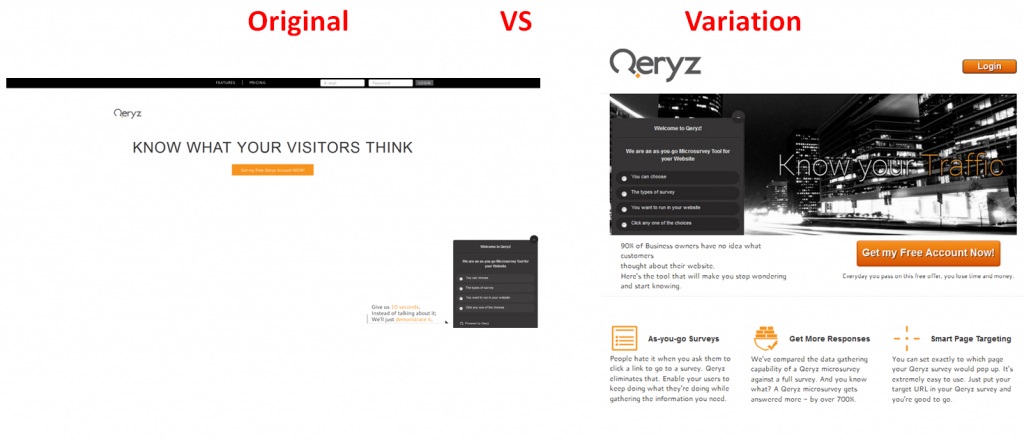
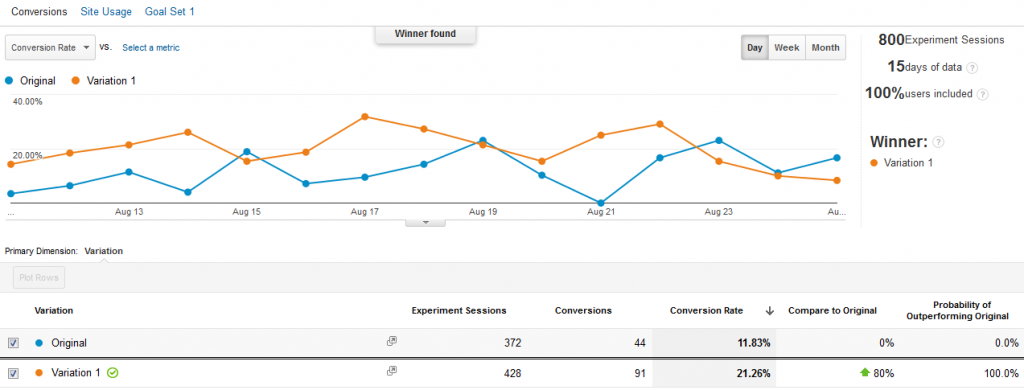
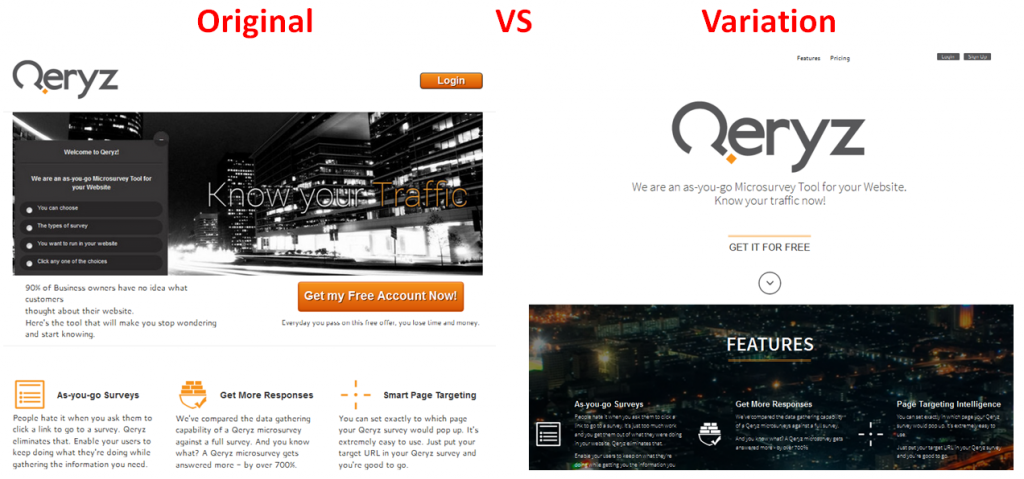
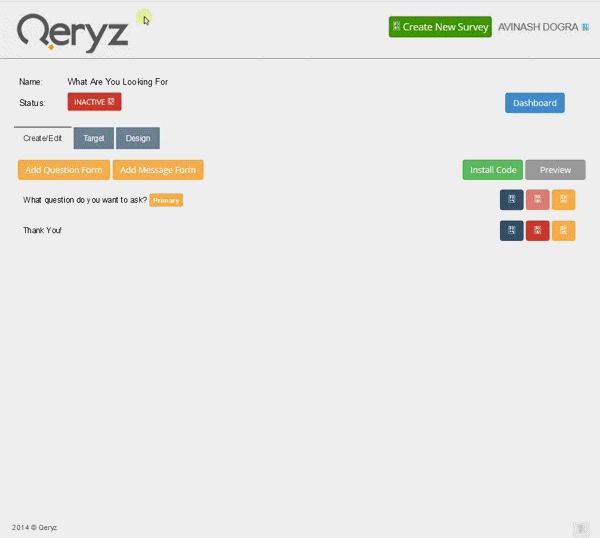
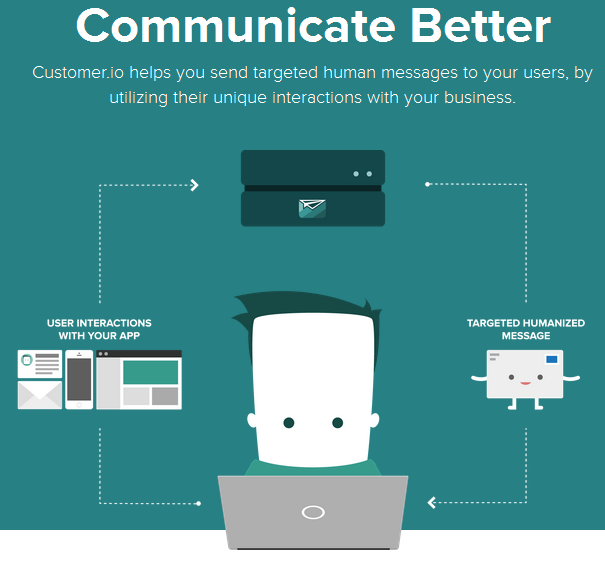
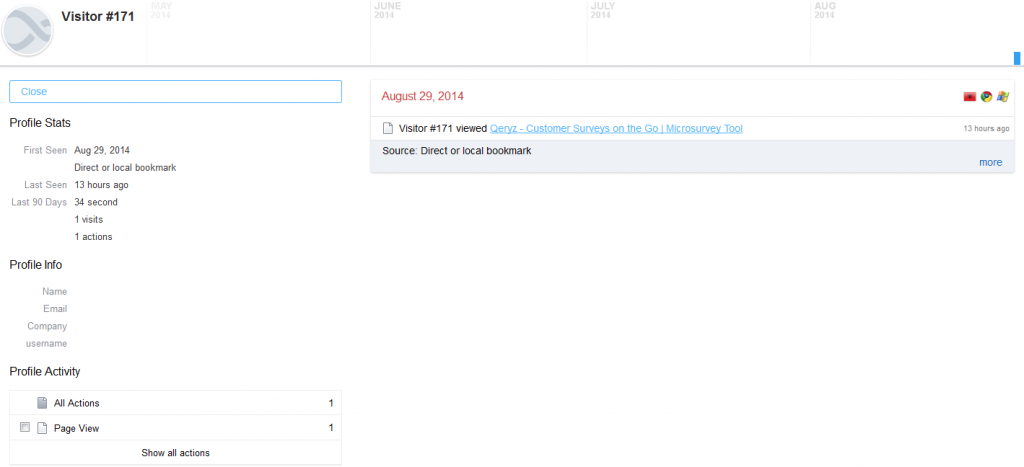
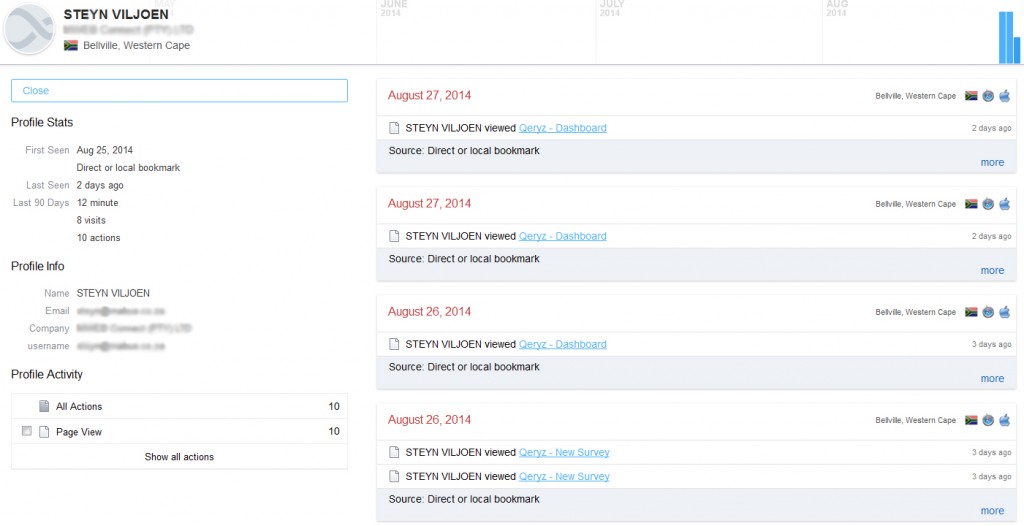
Sean… even CEO’s name is like in Qualaroo
Would love to see more PT screenshots :)
Talk about coincidence. I’m sure he’s a swell guy – coining the term ‘Growth Hack’ is no simple feat. You could check out a sneak peek on how to set Qeryz up here: http://qeryz.com/blog/setting-qeryz-survey/
Or see it working live here: http://seo-hacker.com
Hope this helps!
I meant your Pivotal Tracker screenshots :)
Oh haha my bad. Hmm are you interested in seeing the tool work or in what we have under development for Qeryz? :)